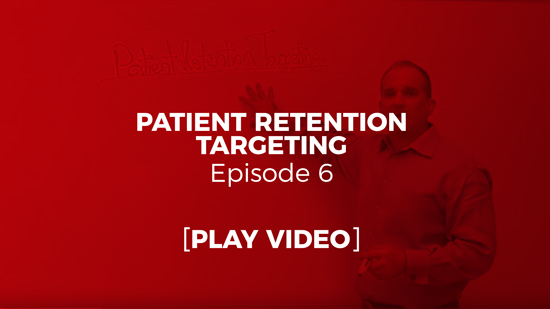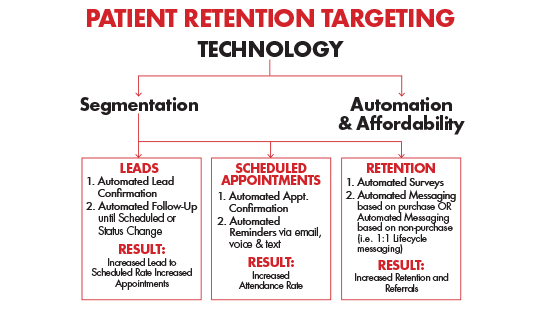Patient retention targeting is a topic that should be front-of-mind for every elective healthcare practice, as it allows you to drive value, decrease team workload, and engage with your clients on a very sophisticated level. The good news is that patient retention targeting is as simple as it sounds. As you look at your patient database, how will you segment and evaluate your patients and leads? Even further, how can you remarket to them to accomplish your goals?
"One of the easiest ways to ensure a smooth patient retention marketing initiative is to make the most of available technology to segment your client base and automate as many retention activities as possible."
The simplest approach is to break this task into three parts:
- Leads—Leads are considered individuals who have given you some form of contact, ideally a first name, last name, and procedure of interest.
- Scheduled Appointments—Who is scheduled, and what can you do to ensure they are in the office within 10 days?
- Procedures—What procedures are they interested in having?
Targeting with Technology
One of the easiest ways to ensure a smooth patient retention marketing initiative is to make the most of available technology to segment your client base and automate as many retention activities as possible.
Here is how you might approach leads, scheduled appointments, and procedures:
Leads
- Automated Lead Confirmation—Send an automated response, confirming that the lead has been received by the practice.
- Automated Follow-Up—If you don’t reach the potential client when you receive the lead, be sure to send a follow-up message until the client schedules or indicates that they are no longer interested.
Scheduled Appointments
- Automated Appointment Confirmation—Appointments are all about attendance. Be sure to automatically send a confirmation email when an individual schedules an appointment so that they are clear about the upcoming date and time.
- Automated Reminders—You should also send automated reminders via email, voice, and text. An email reminder at 72 hours before, a voice reminder at 24 hours, and a text reminder the day of the procedure will ensure that your scheduled appointments have the highest possible attendance rate.
Retention
- Automated Surveys—After the appointment (but still on the same day), send a survey to your client to learn more about their experience.
- Automated Messaging—Whether an individual has elected to have a procedure or not, you should send an automated message to understand why. If you do not hear back in the first five days, you should send a personalized follow-up email. For those who have not responded after five to 10 days, have your office make a final call.
By breaking down your patient retention marketing strategy with these steps, you’ll create a more efficient system that reduces the workload on your staff, saves time, and boosts revenue.

















